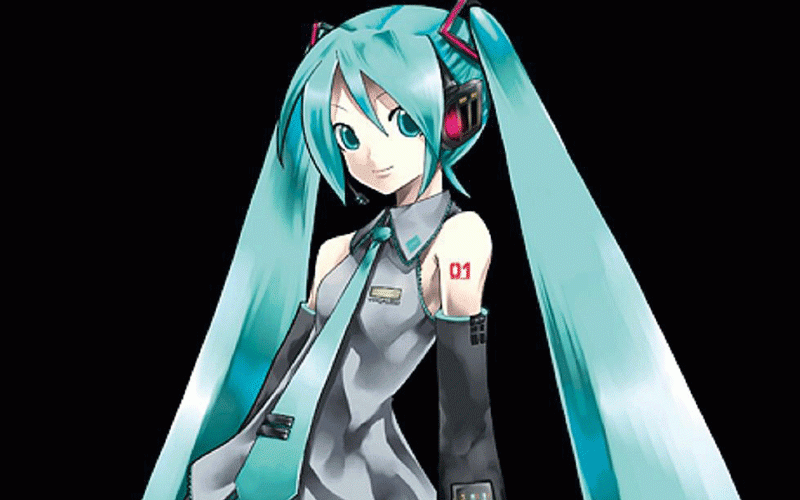
Move over Beyonce! Move over Michael Jackson! Move over Alick Macheso! We don’t need your services anymore! A machine can do it better! Yes! Here comes the digital pop star .
Some of you might ask: “What’s that about?”
I will explain.
In the past, we have seen some electrifying performances by the above-named human beings. Well, things are about to change now.
In the near future, human beings are going to be replaced by non-human performers and we will enjoy the latter as much as we did the former performers.
Imagine yourself paying to attend a concert by a non-human performer or by a virtual model sometimes known as a holographic or digital pop star.
Would you pay to see a robot singing your favourite tunes?
These things are already happening in today’s world. Scientists have created virtual performers where concert goers are unable to distinguish between real people and robots through what is known as artificial intelligence (AI) adventures.
- Time running out for SA-based Zimbos
- Sally Mugabe renal unit disappears
- Epworth eyes town status
- Commodity price boom buoys GB
Keep Reading
Let me start by giving you the history of this and end up telling you how artificial intelligence (AI) has made all this possible. If Beyonce went on stage to give a performance, she would expect to be paid for her musical talent and services, but in today’s world, when a robot gives a performance, it is the owner of that robot who gets all the money whether he has a musical talent or not.
The robot does not complain neither does it get tired. It is moved from venue to venue and it gladly follows the instructions it is given by its master. Isn’t that brilliant?
Although we have not yet come across such events here in Africa, there is a possibility that they will be everywhere in the next decade and people will pay to attend such concerts and get the same satisfaction as they would if a human performer had given such a concert. These acts will be advertised as, for instance, “Boys dze Smoko performing at Mushandira Pamwe Hotel this Sunday. Entrance fee: $5” only to find that the advertised group is a bunch of robots singing and dancing on stage just like real human beings used to do.
One would emulate Macheso’s Borrowdale dance while another would do the Michael Jackson moonwalk. That would be fascinating. Wouldn’t it?
The idea of digital pop stars has been around for a while. It started in Japan where music labels and 3D designers spent nearly two decades trying to create a computer-generated star capable of everything a flesh-and-blood act could do—but free of human limitations, such as fatigue, refusing to go to work, going on strike or getting caught in gossips and scandals.
Hatsune Miku, a Japanese holographic or digital pop star (a robot), eventually achieved that dream, but only after a lot of uncanny valley failure paved the way for her modern-day success. Hatsune Miku has already been to many places around the world giving music performances to satisfied audiences.
It’s been a busy year for Hatsune Miku, the world’s most famous holographic pop star. The teal-haired performer wrapped up her first North American tour in the last few months, selling out stops from Los Angeles to New York. In her native Japan, she made her Kabuki debut, and found the time to model Givenchy dresses for the magazine Vogue, and she still has her annual two-day solo concert in Tokyo this September. Originally conceived as the avatar for a singing-synthesizer software called Vocaloid, Hatsune Miku has become a phenomenon all her own, attracting both “wacky Japan” reactions and more serious praise. She’s far from yet being a household name, but has attracted a massive fan base and coverage internationally. It is a matter of time before we, in Zimbabwe, hear about Hatsune Miku. One ambitious music promoter is already contemplating bringing Hatsune Miku to Zimbabwe. He says, “it will only be one digital pop star to fly over to the country with no band, food or hotel expenses to worry about. I just pay the owner an agreed sum of money and that’s it.”
Hatsune Miku has achieved a lot, but her success wasn’t a sudden development. Hatsune Miku isn’t the first effort at creating a virtual idol, a non-human performer independent from existing franchises or artistes (also, not a hip-hop-ified cat acting as sidekick). Hatsune Miku does not even need to sign a contract with any corporate organisation. She just follows the instructions she is given.
One begins to wonder whether audiences all over the world enjoying this new technology of concert performances such as Hatsune Miku’s are likely to take over the jobs of real human live performers? Can AI be a threat to the Beyonces and the Machesos of today’s world. It is a matter of wait and see.
Efforts to create a virtual idol in Japan started in the 1990s, as the quality of 3D modeling software improved and the character Shiori Fujisaki—from the 1994 dating simulator Tokimeki Memorial—experienced massive popularity. Talent agency Horipro went all in on a computer-generated pop star in 1995, putting together a large staff (and investing millions of dollars) to create a new type of talent for the digital age. Kyoko Date was the final product, and the first majorly publicised attempt at a virtual idol.
The talent agency, Horipro, aimed to make Kyoko Date as realistic as possible, recording muscle movement from human models while also giving the fledgling digital pop star a detailed, relatable backstory. In trying to make Date sound like a real human being, stories were being created around this non-human digital pop star. She grew up in a suburb, worked a part-time job, and counts “learning foreign languages” and “collecting sneakers” as hobbies just like any other human being would do.
Despite her physical self being completely computer created, Date still required two human voice actors to provide her singing and speaking voice.
After lengthy delays, Horipro announced Date to the public in May 1996, sparking a media frenzy, including small features in Western publications such as Entertainment Weekly and SPIN. Further delays deflated excitement, but Date went ahead doing radio appearances and, later that year, releasing the song Love Communication, a number that didn’t sound much different from the upbeat J-pop made by human contemporaries Namie Amuro or Tomomi Kahala. The single came with a music video that found the singer walking the streets of New York and Tokyo, while also delivering dance moves that, in 2016, looked extremely clunky, but might have been impressive in 1996, in a “hey, this is a start” sort of way.
Recently, a digital media team has created a dancer and performer known as Polar. This digital pop star is assisting musicians with their live performances.
Inspired by Swedish pop group ABBA's concert with digital avatars, metaverse-born singer, dancer and influencer, Polar, hopes to go from the metaverse to the real world with a debut performance, according to the digital team behind her.
The creation of media company The Soul Publishing, Polar currently exists only in virtual world environments and on social media.
Polar’s career took off in 2021 when she performed her debut single Close To You in the video game "Avakin Life," and she has 1.6 million followers on TikTok and a YouTube channel with more than 500,000 subscribers.
Fans were able to interact with her again last month at the game's annual Solar Sounds Festival, which Victor Potrel, The Soul Publishing's vice president of platform partnerships, said attracted more than four million visitors last year.
"I want to perform a live show in a real venue in front of my real-world fans. It may not be as far away as people think," Polar said in answer to a question submitted by Reuters. (Yes, these robots can also speak to people and intelligently answer questions when asked).
Potrel said that, while the focus was on the huge audience in the metaverse, her team was considering options for possible real events too.
"ABBA is doing a series of concerts where they use a hologram on stage, and we think that that's a type possible – to also bring Polar to the real world in this way," he said.
"So definitely we are looking at design possibilities and potential."
Regarding the merging of digital and real-world spaces, in the future, Potrel thinks we will see more fluidity. This year, much of the innovation energy revolves around AI, with the vast majority of its users using it to spark ideas.
Many musicians want to come up with innovative things on stage and the availability of AI is empowering them to do it but some are complaining that allowing the digital pop star to exist, will take their jobs away.
It is up to society to decide whether AI poses a problem to humanity or not. We will wait and see.
Feedback: [email protected]










